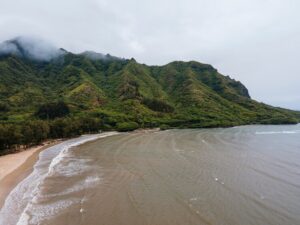Microclimates
It is said that Costa Rica has two kinds of weather, hot and hotter. It’s quite true, as the country’s proximity to the equator makes the length of the day and the average temperature remarkably stable and predictable. The average day lasts 12 hours, from about 5:45 am to 5:45 pm. The average daily temperature in Guanacaste is 73-89 degrees Fahrenheit.
Guanacaste’s coastal climate is heavily influenced by its position near the Intertropical Convergence Zone (ITCZ) and the nearby Pacific Ocean. The region experiences a tropical savanna climate (Köppen Aw classification), marked by two distinct seasons:
1. Dry Season (December to April): Minimal rainfall and consistent sunshine dominate these months, earning Guanacaste its reputation as the “golden coast.”
2. Rainy Season (May to November): rains transform the landscape, fostering lush greenery and replenishing local water sources.
This climatic rhythm has shaped local agriculture, ecosystems, and tourism dynamics for decades.
Here is a weather chart summarizing the tropical climate parameters for the seven main regions of Costa Rica based on rainfall, average temperatures, sunshine hours, humidity, and wind conditions:
| Region | Rainfall (in/year) | Avg Temp (°F) | Sunshine Hours (year) | Avg Humidity (%) | Wind (mph) |
| Guanacaste | 50–60 | 81–86 | ~2,500 | 60–75 | 10–15 |
| Puntarenas | 54–140 | 80–85 | ~2,490 | 70–80 | 10–15 |
| San José | 68 | 73–78 | ~2,600 | 75–85 | ~10 |
| Cartago | 58 | 68–72 | ~2,500 | 80–90 | ~10 |
| Limón | 140–150 | 79–83 | ~2,100 | 85–90 | ~5 |
| Alajuela | 69 | 75–80 | ~2,700 | 70–85 | 10–15 |
| Heredia | 90–100 | 74–79 | ~2,500 | 80–90 | 5–10 |
Rainfall varies throughout the year, with the wettest months being September and October. Here’s an approximate breakdown:
• January: 0.2 inches (5 mm)
• February: 0.1 inches (3 mm)
• March: 0.2 inches (5 mm)
• April: 0.8 inches (20 mm)
• May: 6.3 inches (160 mm)
• June: 8.3 inches (210 mm)
• July: 5.9 inches (150 mm)
• August: 7.5 inches (190 mm)
• September: 11.8 inches (300 mm)
• October: 12.6 inches (320 mm)
• November: 5.5 inches (140 mm)
• December: 0.8 inches (20 mm)
These figures are approximate and can vary by specific location within Guanacaste.
Travel Expectations:
• Dry Season: Expect sunny days, ideal for beach outings, surfing, and exploring national parks. Popular destinations like Tamarindo and Playa Flamingo are bustling with tourists during this peak season.
• Wet Season: Afternoon showers are common, leading to vibrant green landscapes and fewer tourists. This is a great time for eco-tourism activities, such as visiting waterfalls and wildlife watching.
Recommendations:
• Attire: Light, breathable clothing is suitable year-round. During the wet season, consider bringing a light rain jacket and waterproof footwear.
• Activities: Plan outdoor activities in the mornings during the wet season to avoid afternoon showers. The dry season offers optimal conditions for all-day excursions.
• Reservations: If you travel during the dry season, especially between December and March, it’s advisable to book accommodation and tours in advance due to higher demand.
By aligning your travel plans with Guanacaste’s seasonal patterns, you can make the most of your visit to this beautiful region.





